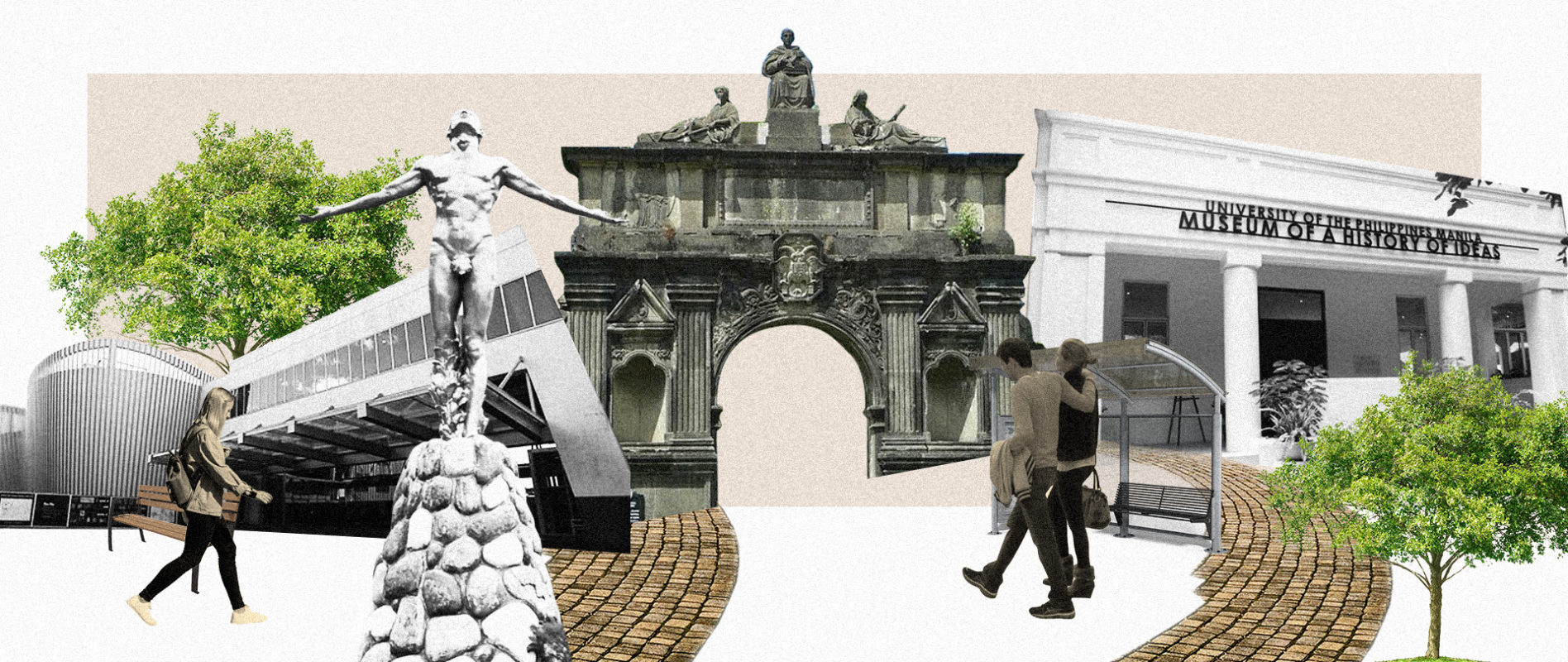TAKE A CLOSER LOOK INTO THE MOST ICONIC AND HISTORIC UNIVERSITY LANDMARKS IN THE PHILIPPINES
With classes being held online, many students missed the opportunity to see Philippine universities’ most treasured landmarks. But nobody said you cannot learn about them by merely looking at your screens.
Students are among the people who received the most dreadful blow of the COVID-19 pandemic. What used to be school grounds with busy people are now deserted areas swept away by silence.
In the Philippines, many universities feature iconic landmarks that incoming students were supposed to see in the flesh. But given the unfortunate events, it might take longer before they could go to these places in person.
In the meantime, it is not bad to learn more about them online. Here are the most famous university landmarks in the Philippines:
UNIVERSITY OF THE PHILIPPINES’ (U.P.) OBLATION STATUE
Whether you’re a student of U.P. or just passing by, chances are that you have noticed the Oblation Statue crafted by National Artist Guillermo Tolentino. The statue, which measures 3.5 meters in height, is the university’s symbol.
It was first conceived during the Presidency of Rafael Palma in 1925. Palma, who commissioned Tolentino, wanted the statue to be inspired by the second verse of Jose Rizal’s “Mi Ultimo Adios.”
According to Tolentino, the Oblation statue is inspired by man’s patriotism and dedication to the nation. “The completely nude figure of a young man with outstretched arms and open hands, with tilted head, closed eyes and parted lips murmuring a prayer, with breast forward in the act of offering himself, is my interpretation of that sublime stanza. It symbolizes all the unknown heroes who fell during the night.”
“The statue stands on a rustic base, a stylized rugged shape of the Philippine archipelago, lined with big and small hard rocks, each of which represents an island. The “katakataka” (wonder plant) whose roots are tightly implanted on Philippine soil, is the link that binds the symbolized figure to the allegorical Philippine Group. “Katakataka” is really a wonder plant. It is called siempre vivo (always alive) in Spanish. A leaf or a piece of it thrown anywhere will sprout into a young plant. Hence, it symbolizes the deep-rooted patriotism in the heart of our heroes. Such patriotism continually and forever grows anywhere in the Philippines.”
As of this post, the original Oblation statue is being kept inside the Main Library (Gonzalez Hall), the former site of the U.P. College of Fine Arts.
UNIVERSITY OF SANTO TOMAS’ (UST) ARCH OF CENTURIES
It has become an inside joke or an urban legend among UST students that if you pass through the Arch of Centuries located meters away from the university’s Millennium Gate along España Boulevard, it would be hard for you to graduate or finish your program.
But this arch has seen more events than that. Erected around 1680 at Intramuros, Manila (where UST was originally established), the Arch of Centuries was able to welcome and send off Thomasians for ages.
The arch is made up of doric columns with the inscription that says “Gateway to the history of the finest breed of Filipinos.” The National Museum of the Philippines declared the arch as a national treasure on January 25, 2010 along with the UST main building, the Central Seminary Building, and the university field.
U.P. MANILA’S MUSEUM OF A HISTORY OF IDEAS
Constructed in 1931, the U.P Manila’s Museum of a History of Ideas was among the first buildings constructed for the university. During World War II, this establishment was used as the emergency headquarters of the university’s administration.
ATENEO DE MANILA’S “ATENEO ART GALLERY”
Modern art is very much alive and valued in Ateneo Art Gallery. The museum, which can be found at the Arts Wing, Areté, houses more than 500 artworks that include posters, photographs, art installations, drawings, paintings, animation, sculpture, and whatnot.
The gallery was established in 1960 following Fernando Zobel’s bequest to the university of his collections that feature the works of Filipino post war artists. Today, it is currently recognized as the first museum of modern Filipino art.














